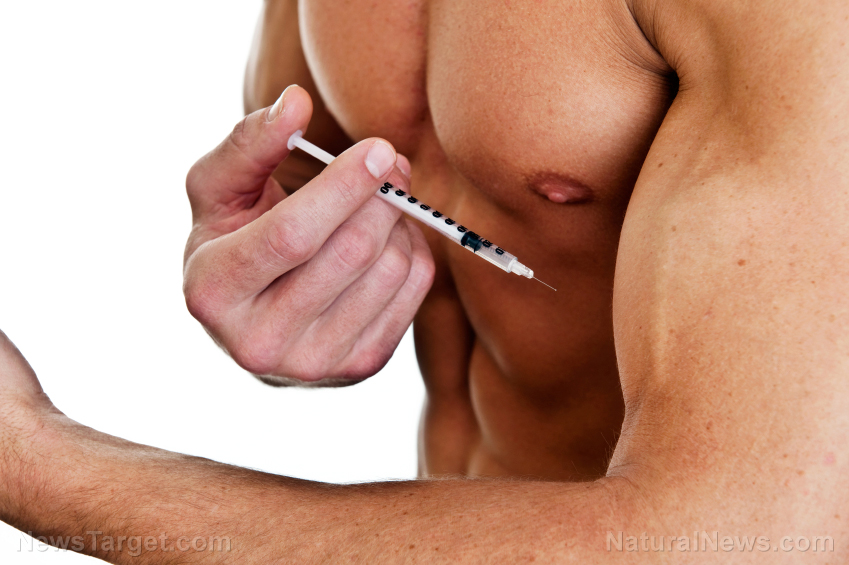
...........................................................................................................................................................
Steroids Linked To Infertility
And Erectile Dysfunction.
Men who use steroids to
bulk up risk sexual and reproductive dysfunction
By Michael Alexander
Men
using steroids to boost their physique may be doing more harm than good to
their bodies, experts warn, linking the drugs to increased risk for infertility
and erectile dysfunction.
James
Mossman, a researcher from Brown University, first noticed the effects that
steroids have on men’s fertility after seeing “huge” men getting tested for
their fertility, while he was studying for his doctorate at the University of
Sheffield.
“They are trying to look really big, to look like the
pinnacles of evolution. But they are making themselves very unfit in an
evolutionary sense, because without exception they had no sperm in their
ejaculation at all,” Mossman said in
an interview with the BBC.
Allan
Pacey, a professor of andrology at Sheffield and Mossman’s research partner on
the link between anabolic-androgenic steroids and sterility, told the BBC that
he finds the situation “ironic.”
“Isn’t it ironic that men go to the gym to look
wonderful, for the most part to attract women, and inadvertently decrease their
fertility?” Pacey said.
This
phenomenon, where men damage their fertility by taking drugs designed to make
them more attractive to potential partners, has been named the Mossman-Pacey
paradox after the two scientists.
The
same fertility issue has been seen in men using the anti-balding drug
finasteride, according to the two, noting that the drug can also trigger
erectile dysfunction.
Finasteride,
a prescription drug originally sold for the treatment of prostate problems,
limits hair loss by changing the way the body metabolizes testosterone,
stopping it from being converted into dihydrotestosterone, a male androgen
linked to baldness.
In
a study conducted by The George Washington University and published in JAMA
Dermatology, roughly five percent of men taking the medication experienced a
decline in sperm count.
In
his interview, Mossman noted that while taking these vanity-based medications
might make one more attractive, these have the risk of turning one into “an
evolutionary dud,” adding that this current trend of “killing fertility” to
make one more appealing to members of the opposite sex is “probably unique” to
humans.
Mossman
and Pacey, in their BBC interview, warned that men may not be aware of the
potentially life-changing side effects of their vanity, adding that men who may
be enticed to try steroids might be dissuaded by more information on the drugs’
dangerous side effects.
“It keeps cropping up in clinics and the message is
not getting out to young men that it’s a problem and a bit of info could save
them a lot of heartache,” Pacey said.
The
danger of using steroids
By
definition, anabolic-androgenic steroids are synthetic drugs that mimic the
effect of the male hormone testosterone in the body and are used to increase
muscle growth in patients with muscle-wasting diseases such as AIDS, chronic
obstructive pulmonary disease (COPD), as well as cancer and kidney and liver
disease.
According
to the National Health Service (NHS), despite the drugs’ status as prescription
medication, many individuals still take anabolic-androgenic steroids as illicit
performance enhancers.
Despite
the stereotype of steroid-pumping athletes, however, an article published by
the UK-based news site The Guardian, citing a report by Public Health Wales,
said up to 1 million people in the U.K. take anabolic steroids and other image
and performance-enhancing drugs (IPEDs) not because of any plans to compete in
sports, but rather, to change the way they look.
The
Guardian report said these users range from teenagers “seeking the perfect
physique” to elderly men “hoping to hang on to youthful looks.”
This
is corroborated by an NHS report, which says that people of all ages have been
known to misuse these drugs, including adolescent boys who suffer from body
dysmorphic disorder – a mental health condition where a person spends a lot of
time worrying about perceived flaws in their appearance.
Despite
their perceived benefits to users, however, the NHS reiterates that steroids –
commonly referred to as gym candy, gear, juice and roids – have been linked to
increasingly dangerous side effects such as an increased risk of prostate
cancer, heart attack, stroke, liver and kidney problems, hypertension and blood
clots, as well as psychological problems such as aggressive behavior, mood
swings, paranoia, manic behavior and hallucinations and delusions.
Misuse
of steroids has also been linked to addiction.


No comments:
Post a Comment